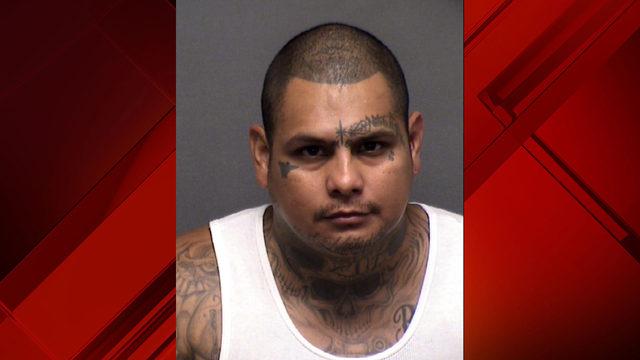San Antonio Jury Delivers Guilty Verdicts in Major Mexican Mafia Case
In a landmark decision, a San Antonio jury found two individuals guilty in a widely publicized trial involving the Mexican Mafia, a powerful and feared criminal organization. The lengthy court proceedings exposed a range of illicit activities, including racketeering, violent offenses, and drug trafficking, all orchestrated by the gang to maintain dominance in South Texas. Law enforcement officials celebrated the verdict as a crucial step toward weakening the syndicate’s hold on the region and enhancing public safety.
Highlights from the trial included:
- Management of illegal enterprises spanning several counties
- Employment of threats and violence to intimidate rivals and witnesses
- Alliances with other criminal factions to broaden territorial control
- Efforts to corrupt local government officials and institutions
| Defendant | Charges | Possible Sentencing |
|---|---|---|
| Jose Ramirez | Racketeering, Drug Trafficking | 20+ years imprisonment |
| Maria Gonzales | Conspiracy, Intimidation | 15 to 25 years imprisonment |
Inside the Mexican Mafia Operations: Evidence and Witness Accounts
Detailed testimonies from cooperating witnesses, alongside thorough analysis of intercepted communications, unveiled the intricate workings of the Mexican Mafia’s criminal network. Prosecutors demonstrated how the defendants orchestrated a variety of illegal activities, including drug distribution, extortion, and violent enforcement both within San Antonio’s correctional facilities and the surrounding neighborhoods. These insights revealed a rigid command structure that controlled inmates and street-level operatives alike.
Notable disclosures included:
- Use of encrypted messages and smuggled cell phones to coordinate smuggling and violent acts
- Financial flow charts illustrating the allocation of illicit earnings among top-tier members
- Descriptions of coercive methods employed to ensure loyalty and silence dissent
| Type of Evidence | Function |
|---|---|
| Surveillance phone recordings | Coordinating criminal schemes |
| Financial documentation | Tracing illegal revenue streams |
| Witness statements | Confirming gang hierarchy and roles |
Effects of the Convictions on Crime Rates and Community Wellbeing
The recent convictions represent a pivotal moment in San Antonio’s ongoing battle against organized crime. By removing key figures from the Mexican Mafia’s local operations, authorities have disrupted the gang’s control and sent a strong message to other criminal elements. Since the arrests, law enforcement has reported a noticeable drop in gang-related offenses, including violent incidents, narcotics distribution, and illegal weapons possession.
Beyond the immediate reduction in crime, these outcomes have fostered renewed confidence among residents. Community leaders stress the importance of sustained cooperation between police forces and neighborhood groups to maintain and build upon these gains. Some of the positive developments observed include:
- Enhanced law enforcement visibility in previously high-risk neighborhoods
- Greater public participation in local crime prevention initiatives
- Increased public awareness regarding the threats posed by organized crime
- Improved inter-agency collaboration targeting gang activity
| Indicator | Before Conviction | After Conviction |
|---|---|---|
| Monthly Gang-Related Reports | 85 incidents | 42 incidents |
| Community Safety Rating | 59% | 78% |
| Neighborhood Watch Enrollment | 120 members | 230 members |
Enhancing Law Enforcement Collaboration to Combat Organized Crime
Following the convictions in this high-profile Mexican Mafia case, legal analysts are advocating for stronger cooperation among law enforcement agencies at all levels. They emphasize that dismantling complex criminal organizations requires a coordinated approach that integrates federal, state, and local efforts. Such collaboration can accelerate intelligence exchange, streamline investigative processes, and improve prosecution outcomes.
Experts identify several critical areas for bolstering inter-agency partnerships:
- Unified Data Systems: Developing centralized platforms accessible to multiple agencies for real-time tracking of suspects and criminal activities.
- Specialized Joint Task Forces: Forming dedicated teams combining expertise from various jurisdictions to focus on specific gangs or crime syndicates.
- Shared Training Programs: Offering cross-agency education to enhance understanding of multi-jurisdictional laws and investigative techniques.
| Collaboration Component | Advantage |
|---|---|
| Information Exchange | Quicker identification of suspects and case breakthroughs |
| Joint Operations | Pooling resources and specialized knowledge |
| Legal Coordination | Consistent and effective prosecution strategies |
Conclusion: Key Insights and Future Outlook
The convictions of Jose Ramirez and Maria Gonzales represent a major stride in the effort to curtail the Mexican Mafia’s influence in San Antonio and its environs. Authorities remain steadfast in their commitment to pursuing justice against organized crime figures who jeopardize public safety. Moving forward, continued vigilance, community involvement, and inter-agency cooperation will be essential to sustaining progress. Prosecutors are preparing for upcoming phases of the case, signaling ongoing efforts to dismantle entrenched criminal networks.




